We analyzed 986 images shortlisted for the Astronomy Photographer of the Year competition in the past 7 years to find the Best Star Trackers for Astrophotography.
From our analysis, we recommend the Sky-Watcher Star Adventurer as the number one pick.
Watch the video above or read on to see our findings and explore the pros and cons of each.
|
Top Pick
Make & Model:
Sky-Watcher Star Adventurer
|
Alternative Pick
Make & Model:
iOptron SkyGuider Pro
|
Budget Pick
Make & Model:
Move Shoot Move Nomad
|
|
Payload capacity:
11 lbs (5 kg)
|
Payload capacity:
11 lbs (5 kg)
|
Payload capacity:
7.7 lbs (3.5 kg)
|
|
Item weight:
3.7 lbs (1.7 kg)
|
Item weight:
3.2 lbs (1.5 kg)
|
Item weight:
0.9 lbs (0.4 kg)
|
What is the Best Star Tracker for Astrophotography?
We analyzed all shortlisted images in the past seven years (2018-2024) for the most prestigious astrophotography competition in the world – Astronomy Photographer of the Year – to see what star trackers were used.
Each image has the equipment used listed by the individual photographer and we found that, of all those that listed Star Trackers, the Sky-Watcher Star Adventurer was the most successful:
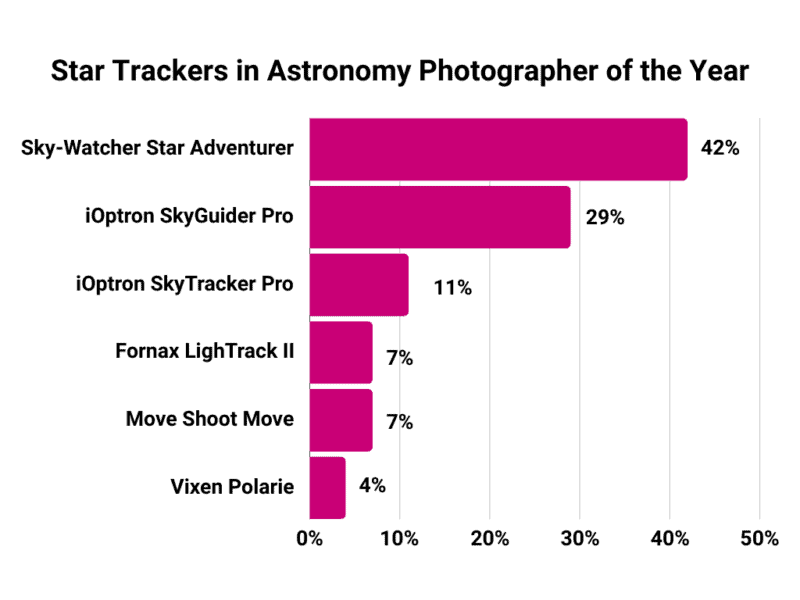
However, nearly the same amount of images were taken with iOptron devices if you combine the SkyTracker Pro and SkyGuider Pro.
Below we examine the individual star trackers to assess the key differences.
Sky-Watcher Star Adventurer
Top Pick
The Sky-Watcher Star Adventurer is the most popular star tracker for astrophotography.
The most up-to-date version is the 2i, which was a 2019 replacement for the previous Star Adventurer.
What the update added was in-built wifi in the mount so that it can be operated via smartphone with Sky-Watcher’s app.
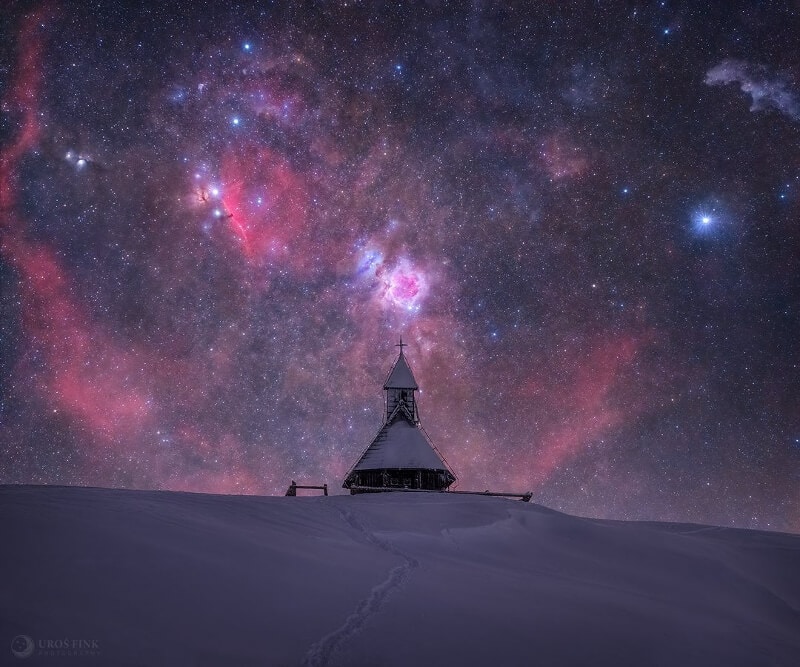
It has a similar payload capacity of 5kg (11lb). And, like the SkyGuider Pro, it means that it can not only work with your camera and wide-angle lens for starry landscape photography but also with a bigger telephoto lens or a small telescope to capture far-off objects like other galaxies in deep space.
It has seven different tracking modes, which includes a 1/2 sidereal rate which is great for one-shot landscape plus starry sky shots as it enables you to do 30-60 second exposures (depending on your focal length) and then capture the foreground as well as the stars in the sky without star trails.
This saves you from having to do one shot for the foreground and another for the night sky and blend them later in Photoshop (or your chosen software). This is a cool feature that can save you time and enable you to pull off great Milky Way landscape shots with minimal fuss.
It is powered by either four AA batteries or recharging via a mini-USB port. A new set of AAs should get you 72 hours of running, which is much longer than the iOptron trackers. This is a distinct advantage in that if you have a backup set of batteries you know you have plenty of power for a night of imaging.
It is, though, one of the biggest and bulkiest star trackers on this list. It weighs in at 3.7lb, which is heavier than the others.
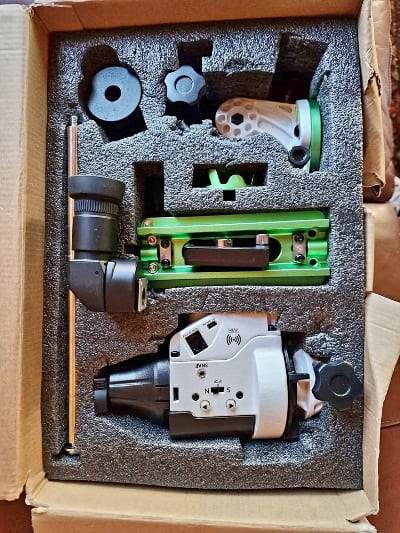
It has an in-built polar scope for alignment and, like the SkyGuider Pro, the Star Adventurer can connect a guide scope for autoguiding to further improve the tracking accuracy for deep-sky photography.
When you buy the Star Adventurer 2i Pro Pack, it should come with the latitude equatorial (EQ) base included, which is a good and easy-to-use base. In addition, you should get the declination bracket and counterweight included, which are needed for using heavier setups and deep-sky imaging.
Key specifications
- Payload capacity: 11lb (5kg)
- Tracking rates: Seven: Sidereal, 1/2 sidereal, solar, lunar, timelapse (12hr, 4hr, 2hr)
- Polar alignment: Built-in polar scope with illuminator
- Item weight: 3.7lb (1.7kg)
- Power source: External mini-USB power support or 4 AA batteries
Motorized Star Tracker Equatorial Mount for Astrophotography. 2i Pro Pack.
- Perfect for capturing the Milky Way and other astronomical objects
- Smartphone controlled using free app
- Deluxe equatorial base helps position at the perfect angle for polar alignment
- Can be used with any photographic tripod
iOptron SkyGuider Pro
Alternative Pick
The iOptron SkyGuider Pro is one of the two most popular star trackers for astrophotography.
It has a payload capacity of 5kg (11lb), so it can cope with heavier cameras and lenses (and is rivaled only by the Star Adventurer in this regard).
This capacity means that it can not only work for lighter wide-angle lenses for Milky Way photography but also heavier telephoto lenses or small telescopes for deep sky imaging.
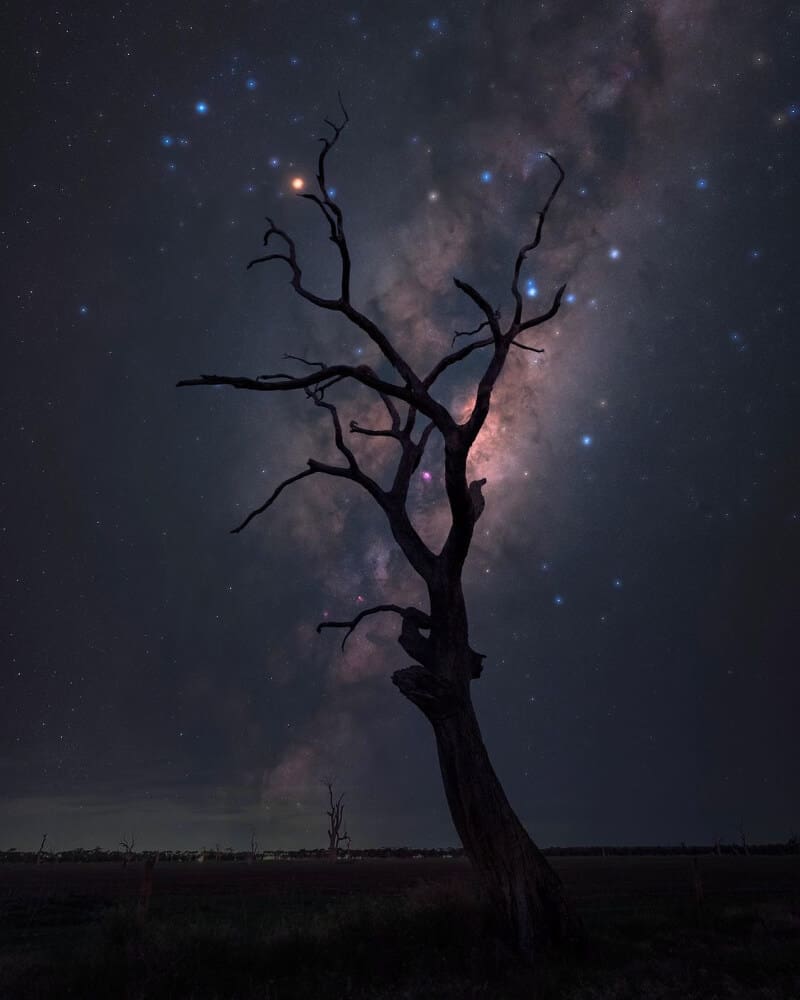
The SkyGuider Pro has four different tracking rates that enable different astronomy objects to photograph:
- Sidereal – for the stars and night sky, and deep sky objects
- Sky and landscape – for when capturing images that combine the Earth’s landscape with the night sky
- Solar – for capturing the sun
- Lunar – for capturing the moon
It has a high-quality (and weather-proof) build. This is particularly where it improves from the slightly older iOptron SkyTracker Pro (covered below).
The battery is in-built and rechargeable by USB, so no need to carry and replace batteries. A full charge gives up to 20 hours.
It is one of the heavier star trackers at 3.2 lbs, especially in comparison to the smaller Move Shoot Move, but this is not too much weight to take on trips and hikes, etc and it is less bulky than the Sky-Watcher Star Adventurer.
For polar alignment, it has a polar scope built-in. This is fine for most people in the Northern Hemisphere where you can see Polaris with relative ease (and the help of the right app).
For those in the Southern Hemisphere, you may want to consider the iPolar version of the SkyGuider Pro that automates the polar alignment via an internal camera (see more on this below).
It also has the capacity to have a guide scope connected for autoguiding to improve tracking accuracy.
It is sold in a package that contains all the additional components needed to make it work with your camera/lens/tripod. This includes a declination bracket and counterweight that allows the high payload capacity.
Key specifications
- Payload capacity: 11lb (5kg)
- Tracking rates: Four: sidereal, solar, lunar, sky & landscape
- Polar alignment: In-built polar scope
- Item weight: 3.2lb (1.45kg) – with battery and base
- Power source: In-built rechargeable battery (USB)
Star Tracker for Astrophotography
- One of the most popular astrophotography star trackers
- Capture the Milky Way and deep sky objects with your DSLR or Mirrorless camera
- Small and compact to fit in your camera bag
iOptron SkyGuider Pro iPolar
There are actually two slightly different versions is the SkyGuider Pro:
- The original (detailed above), and
- The iOptron SkyGuider Pro with iPolar
The only difference is that the original has an in-built polar scope for polar alignment and the updated iPolar version replaces this with an in-built camera that automates the polar alignment process.
This is particularly good for those in the Southern Hemisphere where it is harder to polar align with the North Star.
There are two major downsides to this though:
- It costs more,
- It requires you to connect a laptop to manage the alignment process – a big problem if you want your star tracker to be a ‘grab-and-go’ piece of equipment to take out with you at night.
Therefore for most people, the original SkyGuider Pro is perfect, but there will be some – particularly in the Southern Hemisphere – who will appreciate the iPolar functionality.
Move Shoot Move Nomad
Budget / Travel Pick
The Move Shoot Move Nomad is great if you are looking for something just for Milky Way and landscape astrophotography and not deep space imaging.
The massive advantage of this over the others above is that it is tiny by comparison. So much so that it can just be stored in your camera bag all the time so you always have it at hand.
It is simple to use and can be aligned quickly and easily to Polaris using a laser pointer attachment, although this only really works for users in the northern hemisphere.
It weighs just under 1lb and has a maximum payload of 7.7 lb (3.5 kg).
There is no way to increase this with a counterweight like other star trackers and that is why it is not really suitable for deep-sky photography.
The battery is in-built and rechargeable by USB. One downside is that it only gives you 5 hours, which is a lot less than some other options. However, a full charge should give you enough for a night’s shooting.
Key specifications
- Payload capacity: 7.7 lb (3.5 kg)
- Tracking rates: Starry landscape
- Polar alignment: Laser pointer attachment
- Item weight: 0.9 lbs (0.4 kg)
- Power source: In-built rechargeable battery (up to 5 hours)
Astrophotography Star Tracker
- Capture amazing Milky Way images
- Small, light and inexpensive
- Easy to use with all accessories included
iOptron SkyTracker Pro
The SkyTracker Pro from iOptron is the older version of their star trackers.
Similar to the SkyGuider Pro (above), it is easy to use and is small and portable. It also performs just as well in terms of tracking the camera up to a certain weight and is lighter and generally cheaper.
Where it falls behind is the quality of the build – it is less robust as it is mostly plastic, compared to the higher-quality metal components of the SkyGuider Pro. It also lacks weather-proofing as so its components are more subject to the elements which may affect its longevity.
Importantly, it also cannot take as much weight as the SkyGuider Pro, with a weight capacity of 3 kg (6.6 lbs), although it is possible to add a counterweight kit to the SkyTracker if you need it to take more weight.
You may also want to buy a base as it is not usually included and this makes polar alignment easier (rather than just attaching to a regular ballhead – which you can do).
The Sky-Watcher EQ base is higher quality than the iOptron version (and completely compatible), so you might prefer to get that.
Key specifications
- Payload capacity: 6.6lb (3kg)
- Tracking rates: Four: celestial, solar, lunar, sky & landscape
- Polar alignment: In-built polar scope
- Item weight: 2.5lb (1.15kg) – with base and battery
- Power source: In-built rechargeable battery (USB)
Compact Star Tracker for DSLR and Mirrorless Cameras
- Capture amazing Milky Way images
- Small, light and inexpensive
- Easy to use
iOptron SkyGuider Pro vs SkyTracker Pro
The iOptron SkyGuider Pro is an improved model over the iOptron SkyTracker Pro.
It carries more weight, is a higher quality build, and comes in a package with all necessary components included.
The two positives for the SkyTracker Pro are that as the entry-level option it’ll usually be sold cheaper and that it is a little lighter to carry.
Sky-Watcher Star Adventurer Mini
The Sky-Watcher Star Adventurer Mini (SAM) is Sky-Watcher’s budget star tracker for DLSR cameras.
It boasts being extremely lightweight and also has a smartphone app-operated system.
Like the larger Star Adventurer (above), the SAM attaches to any standard tripod, is capable of astrophotography tracking and timelapse photography.
The unit itself weighs less than half that of the larger Star Adventurer while still using the same Latitude Base and Polar Alignment Scope. On the downside though, it has a lower payload capacity of 3kg (6.6lb).
There is one other notable difference in that it is operated only via the Sky-Watcher Star Adventurer Mini (SAM) app and has no buttons for manual control. Depending on your view, this could be been as either a pro or a con:
- It’s an advantage in that the app is pretty good and allows you to control everything via your smartphone.
- It’s a disadvantage in that you can have issues establishing and maintaining the connection between the Star Adventurer Mini and the app/smartphone. There is also a potential issue if you have traveled to a site and haven’t downloaded the latest version of the app before getting out of internet coverage or your phone has run out of battery etc. Then there would be no way to operate the star tracker.
As with the regular Star Adventurer version, you’ll also need a number of accessories to make it work, including the equatorial base, declination bracket, and a counterweight. If you buy the SAM with the ‘pro pack’ these should be included.
Key specifications
- Payload capacity: 6.6 lb (3 kg)
- Tracking rates: Sidereal, 1/2 sidereal, solar, lunar, timelapse (12hr, 6hr, 2hr)
- Polar alignment: Included polar scope
- Item weight: 1.5lb (0.7kg)
- Power source: External mini-USB power support or four AA batteries
Compact Star Tracker. Pro Pack
- Capture amazing Milky Way images
- Small, light and inexpensive
- Easy to use
Sky-Watcher Star Adventurer vs Star Adventurer Mini (SAM)
If you want the maximum payload and don’t mind the larger size & weight then go for the full-size Star Adventurer.
But if you want the smallest, flexible mount for travel, and don’t mind the reduced payload, then the SAM is well worth considering.
The SAM is also operated only via the smartphone app, which will be a positive for many but also has some potential issues.
Other Star Trackers
There are a number of other less popular but also very good star trackers available:
- Omegon Mini Track LX3 – a budget mechanical star tracker that requires no batteries – it is powered by winding it up by hand and it can track for 60 minutes from one wind-up. It is ultra-lightweight at just 2 lbs (0.9 kg) and has a maximum payload of 6.6 lbs (3 kg).
- Omegon MiniTrack LX4 Quattro NS – like the LX3 above, this is a mechancial, wind-up star tracker that requires no batteries and can track for up to 60 mins. It has a payload capacity of 8.8 lbs (4 kg).
- Fornax LighTrack II – Weighing 2.8 lbs (1.3 kg).
- Vixen Polarie U – WIFI capable star tracker that can be operated via smartphone app. Payload capacity of 5.5 lbs but can be increased to 14 lbs using additional prism rails and counterweights. Runs on four AA batteries but can be charged via USB. It utilizes a detachable alignment tube which allows you to make a rough initial polar alignment, which will probably suffice for wide-field astrophotography. For more precise alignment you can add the optional polar scope.
- Benro Polaris – Premium GOTO star tracker newly released in 2022. The GOTO functionality means that it scans the sky above and will move to point at an astronomical object you select at the press of a button. This is a feature usually seen only in premium telescope mounts for astrophotography.
Best Star Tracker: FAQs
What is a star tracker and how do they work?
Star trackers are small motorized devices that sit between your tripod and camera and slowly move your camera at the speed of the Earth’s rotation whilst it shoots.
This allows you to have longer exposures and capture more light without blurring or star trails.
These are particularly useful for astrophotography, as when you shoot objects in the night sky they appear to move in relation to you because of the rotation of the Earth that you are standing on.
This then limits the exposure time that you can use for what you are trying to capture and, in general, the longer you keep the shutter open, the more light you let in, and then the better your night sky image is.
If you use your camera without a star tracker you will not be able to use a shutter speed of more than a few seconds (the actual number will depend on the camera and lens that you are using), but a star tracker can enable it to shoot for minutes.
How to use a star tracker for astrophotography?
How you operate your star tracker will depend on which model you have gone for, but the broad steps for using one are:
- Set up your tripod, camera, lens, and star tracker (possibly with an additional base)
- Align the star tracker. to do this you need to make sure that it is polar aligned – that is point at Polaris, the North Star. This might take some learning for a beginner but a good tip is to use a compass to make sure you are pointing North and/or use an app like Stellarium to locate it in the sky. It’s worth noting that if you are doing wide-field Milky Way photography then you don’t need to be 100% accurate with the polar alignment. Only when you are shooting far-off deep-sky objects will you need to make sure it is completely right.
- Compose your shot. The camera can point where you want it to, only the star tracker needs to point at Polaris.
- Take the shot. As you would with a normal shot, choose your ISO, aperture and exposure time. The star tracker then starts and moves the camera to allow the longer exposure.
Which star tracker has the greatest payload capacity?
The iOptron SkyGuider Pro and the Sky-Watcher Star Adventurer have the highest payload capacity compared to other star trackers:
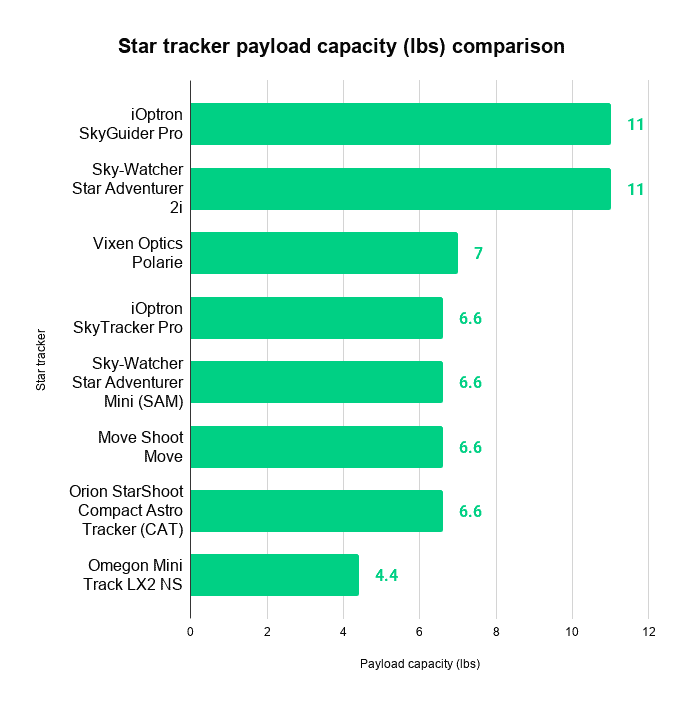
How much weight do I need the star tracker to take?
The star tracker options covered above can take weights ranging from 3 kg to 5 kg. This is known as their “payload capacity”.
But what does it mean for you?
Well, you need to calculate how much your camera and lens weigh together to work out how much capacity you need.
For example, look at these setups:
Example kit 1 for Milky Way photography
- Nikon Z6 camera = 1.29 lbs (0.6 kg)
- Rokinon 14mm wide-angle lens = 1.65 lbs (0.75 kg)
- Total = 2.9 lbs (1.35 kg)
Example kit 2 for deep-sky photography
- Nikon D850 camera = 2.02 lbs (0.9 kg)
- Nikkor 200-500mm telephoto lens = 5.07 lbs (2.3 kg)
- Total = 7.09 lbs (3.2 kg)
Generally, if you are shooting Milky Way shots with a wide-angle lens, then your kit should be lighter and the smaller star trackers will cope.
If you are shooting deep-sky objects or solar system objects with a heavier telephoto lens then your kit will weigh more and so you may need one of the star trackers with the bigger capacity.
One other thing option though is buying a counterweight for your star tracker. These increase the payload capacity of the star tracker to take more weight.
For example, the counterweight sold by Sky-Watcher allows the Star Adventurer to take a weight of 11 lbs. Note though that you will need to have the declination bracket to use the counterweight.
For much heavier payloads (for example, with telescope tubes instead of camera lenses), then the best option might be an astrophotography mount.
What are the pros and cons of star trackers vs mounts?
Essentially, star trackers are much more lightweight and are powered by batteries or even by a wind-up mechanism. This means they are much smaller and lighter.
Mounts are primarily meant for telescopes but can be used for cameras by piggybacking the camera on the telescope. This can work really well but the downside is that mounts are generally much heavier and bulkier, as well as required to be plugged into a source of electricity.
Verdict: What is the Best Star Tracker?
From reviewing the main options, our view is that the Sky-Watcher Star Adventurer is the best star tracker overall, with the iOptron SkyGuider Pro a very close second.
There’s not too much between them and they are both very highly regarded, so it’s worth checking for current prices and availability between them as part of your buying decision-making process.
They both also offer the capacity for Milky Way landscape astrophotography with a wide-angle lens, as well as deep-sky imaging with a telephoto lens (or a small telescope).
However, if you are just looking for a tracking mount for landscape and Milky Way astrophotography then the Move Shoot Move is probably your best option.
This is at least partly because it’s significantly cheaper than the above options, but also because it is smaller, lighter, and more portable, as well as being easier to use.
You can see the full results of our research here: Astronomy Photographer of the Year: Equipment Analysis.
We hope this overview helps you make the decision of the best star tracker for you. Please let us know in the comments below if you agree or disagree, or have any questions about any of this.


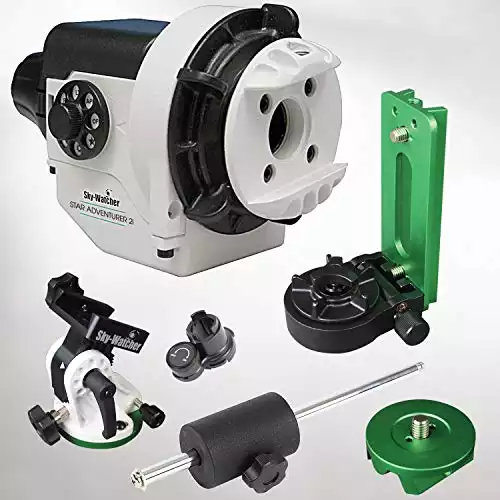
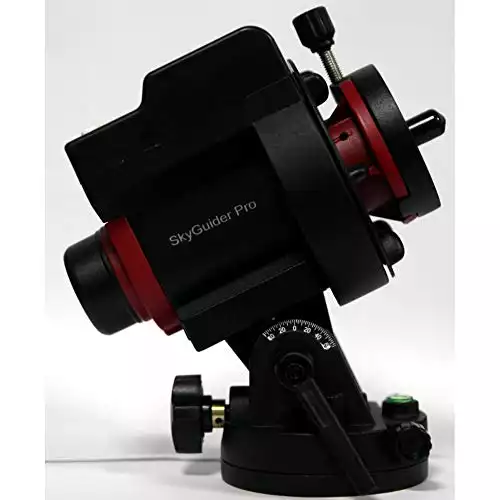
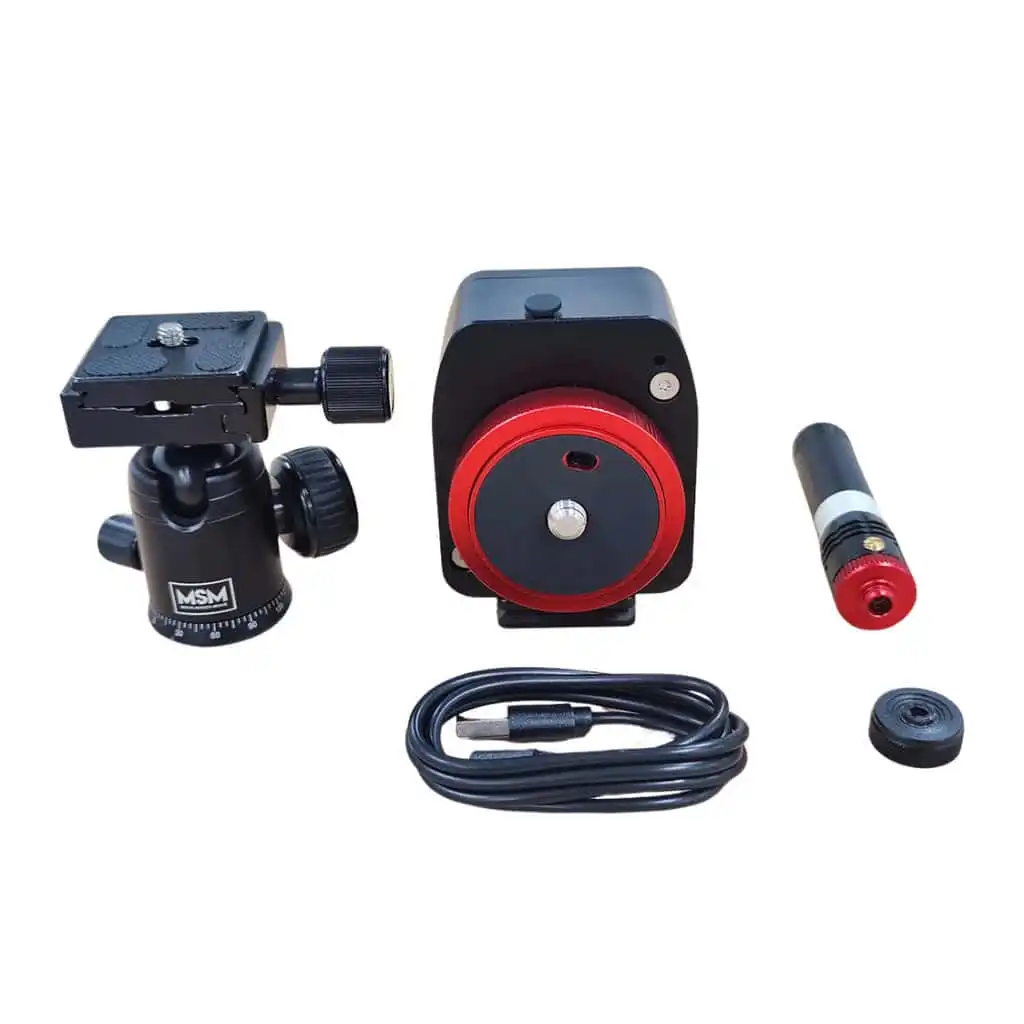



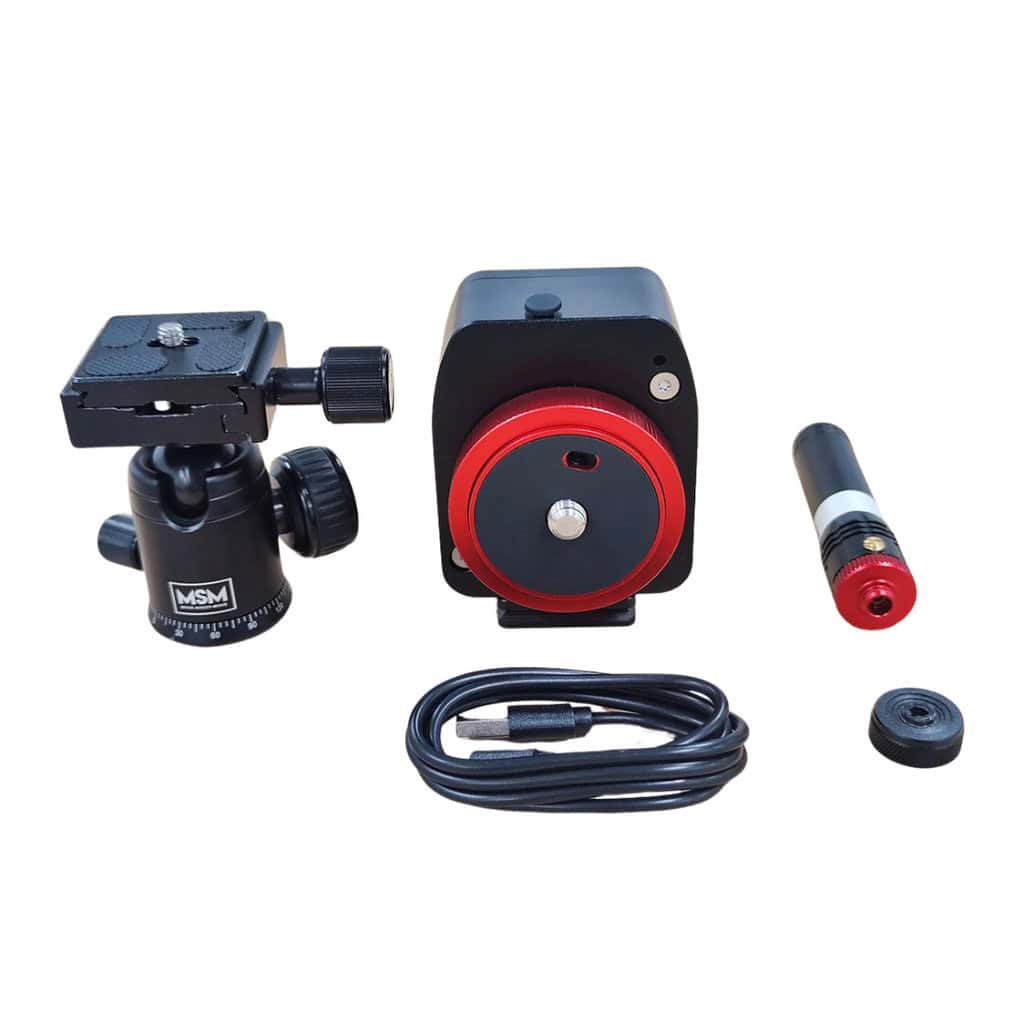



Perhaps I am missing something, but if the Sky-Watcher Star Adventurer Mini operates via WiFi, that has nothing to do with whether there is ‘smart-phone’ coverage or note. Wifi is not the same as cell phone coverage.
Hi Bobby, you are correct in that you don’t need a wifi/internet connection.
Basically, you need to connect to the smartphone app to operate it, as the SAM doesn’t have physical buttons to allow manual control. The issue that is supposed to be highlighted is that the connection between the Star Adventurer Mini and the app/smartphone can drop off or can be hard to establish sometimes and this can be a pain.
The only wifi/internet issue someone might have would be if they had traveled to a site and hadn’t downloaded the latest version of the app before getting out of internet coverage (or their phone had run out of battery etc). Then there would be no way to operate the SAM, which would be frustrating.
Thanks again for the helpful comment.
What is a better buy? A star tracker or a equatorial mount (with GoTo)?
Hi Sven, generally a star tracker is for use with a regular (DSLR/mirrorless) camera and lens, and a mount is for use with a telescope plus camera. Star trackers are smaller and cheaper, but mounts can take heavier loads. Hope that helps.
Interesting that you chose the iOptron over the Sky Watcher. I don’t believe your reasons are valid, and it came down to subjective choice, which is perfectly fine. The StarAdventurer doesn’t need batteries – it can run on USB 5V. If you mean it doesn’t have a built-in battery, it’s nice to be able to carry 12 AA’s for a long trip, and not need external power at all. As for bulkiness, I believe a laptop is much more bulky that none… I also like the slow-motion control on the Star Adventurer. Anyway, I wish I could try both myself. I do like iOptron products.
Thanks Marc! They both have their fans!
Is it possible to use the Sky-Watcher Star Adventurer 2i Pro Pack to take guided images of the Milkey Way with an iPhone 13 Pro Max only?
What would be the best stat tracker for a beginner in the Southern Hemisphere? I plan on starting with landscape/Milky Way and Star trails but don’t want to be limited down the track.
Hi Sara,
Any of the Star Adventurer, MoveShootMove, and SkyGuider Pro can be used in the southern hemisphere.
The MoveShootMove can be bought in a southern hemisphere package and the ipolar version of the SkyGuider Pro helps with polar alignment in the south.
Good luck!